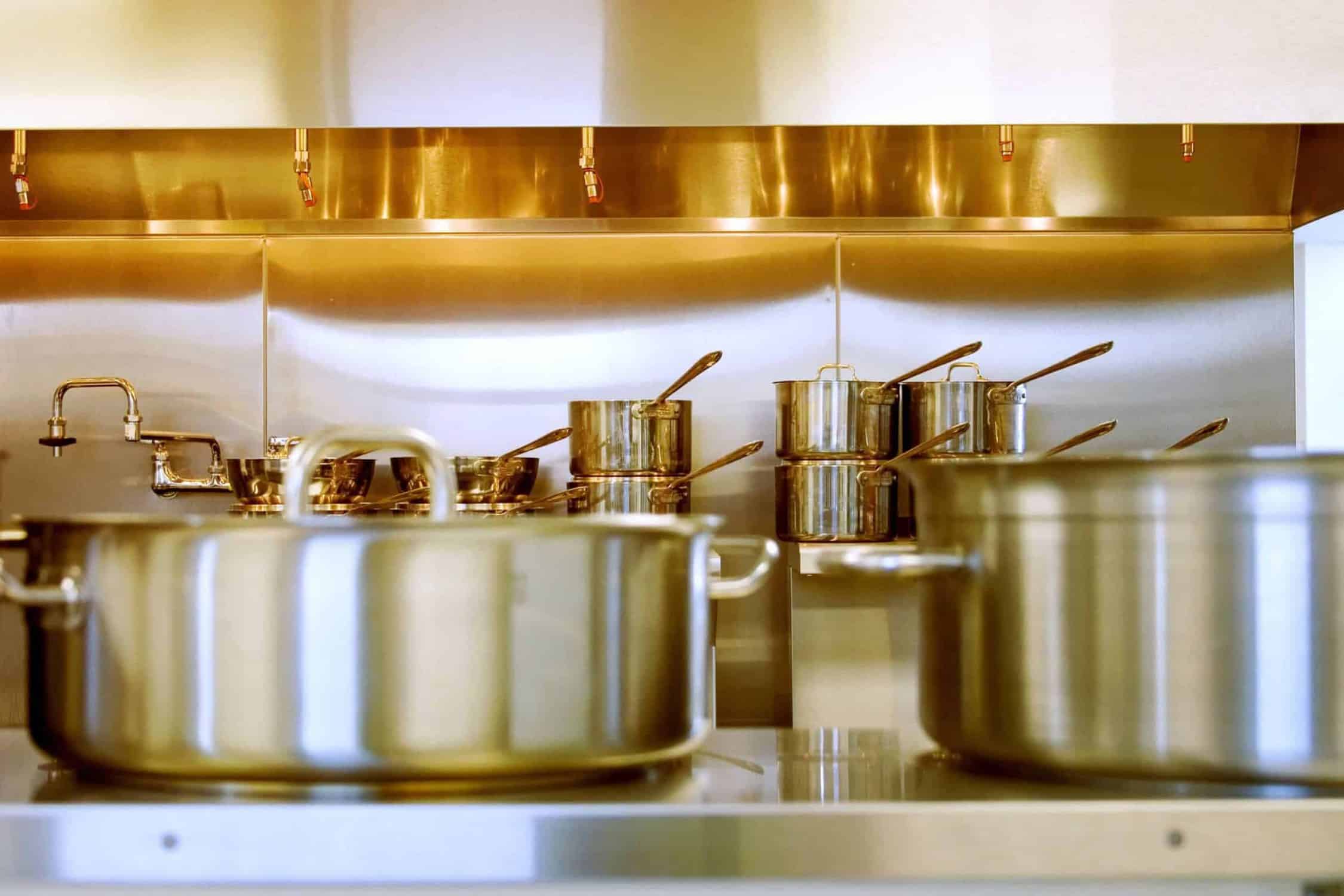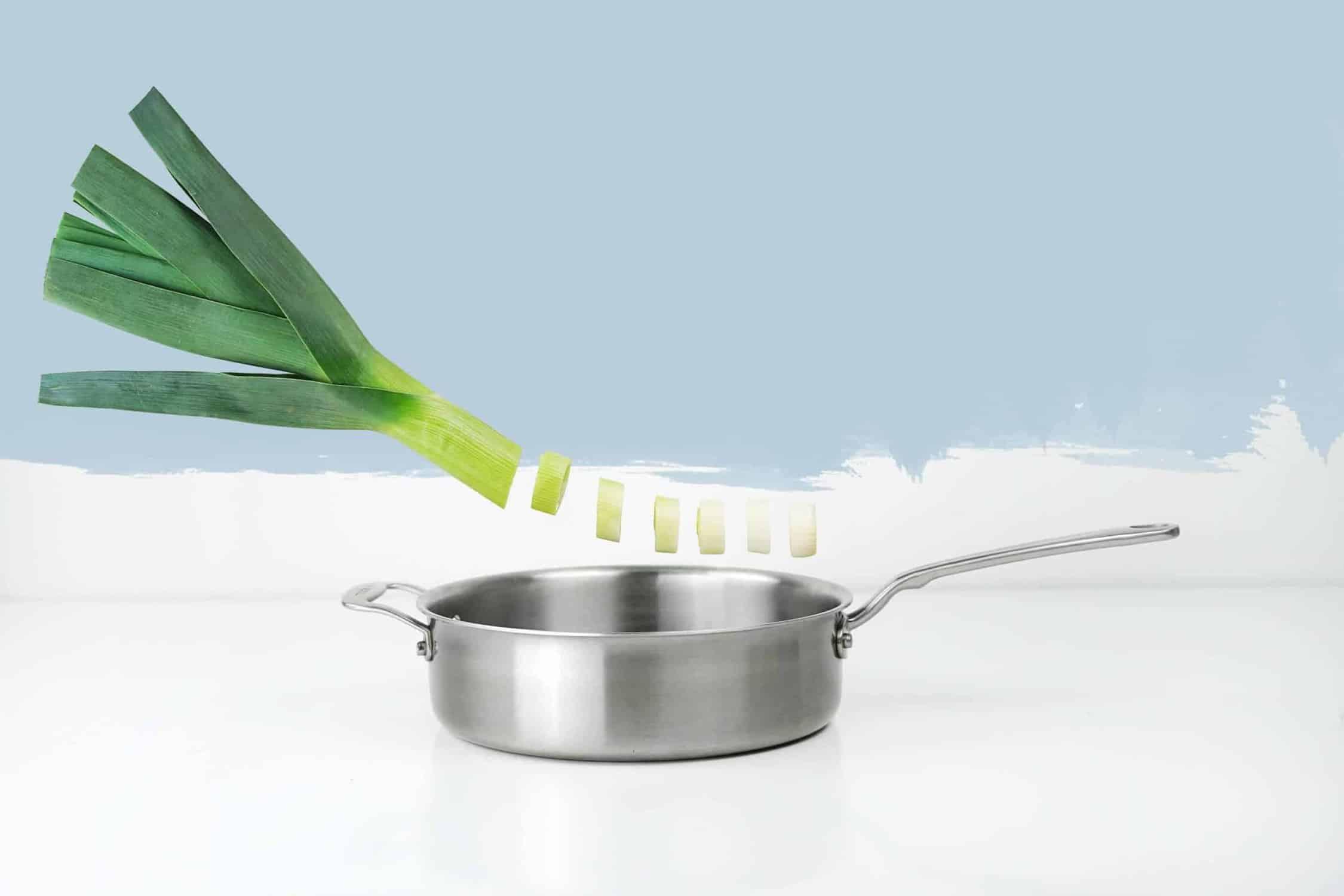How to clean a stainless steel pan: top tips & cleaning tools
Stainless steel pans (stainless steel) have various advantages. In addition to the aesthetic aspect, these types of pans are also very durable and robust in use.
As the name implies, they are not likely to rust and can remain beautiful for a very long time. You can also prepare dishes almost professionally with it. A real chef often works on stainless steel or sheet steel pans.
The difference between these two is that you do not have to burn a stainless steel pan, while a sheet steel pan does.

However, you do have to take the trouble to keep your stainless steel pans clean. If you don’t, it will eventually become increasingly difficult to clean a stainless steel pan properly.
Tips for cooking in stainless steel pans
Stainless steel pans are generally less suitable for food that is rich in protein or flour. These kinds of ingredients quickly stick to the bottom of the pan.
That is why it is always better to purchase stainless steel pans with a non-stick coating. Baking in a stainless steel pan that has no non-stick coating ensures delicious crispy cooking results.
However, if you have not fully mastered baking with such a pan (yet), your ingredients can quickly bake.
How do you clean a stainless steel pan?
Fortunately, there are a number of ways to remove the most stubborn food residues or stains from your stainless steel pan.
We will explain in detail below how you can best clean your stainless steel pan. You can encounter various problems with stainless steel pans:
- Caked on food scraps
- Lime stains
- Burn marks underneeath the pan
- Burn marks on the bottom of the pan
We will give you a step-by-step solution for all these situations and also discuss how to properly maintain stainless steel pans.
Do you have more problems with discoloration of your stainless steel pan? Then read on here.

Check out our new cookbook
Bitemybun's family recipes with complete meal planner and recipe guide.
Try it out for free with Kindle Unlimited:
Read for freeIn this post we'll cover:
Remove baked-on food residues (method 1)
Have you just finished cooking and have leftover food stuck? Let the pan cool down first. If you immediately place the pan under (hot or cold) water, the pan will receive a thermal shock. That is not good for the (lifespan of the) stainless steel pan.
After the stainless steel pan has cooled down, fill it with hot water and a little washing-up liquid. Then put the pan on low heat and let it get warm.
In this way the food remains loosen. You can speed up the process by going through the pan with a dish brush. Most of the residue will come off this way and be removed from the pan. Instead of washing-up liquid, soda can also be used.
Always brush the pan by hand and preferably do not put it in the dishwasher. It is always important to dry the pan with a clean cloth after every cleaning to prevent limescale stains.

Remove baked-on food residues (method 2)
The above method is simple and works fine in most cases. There is another method to remove caked-on residue.
Fill the caked stainless steel pan with water and let the water boil on the stove. Then add two tablespoons of table salt or else one tablespoon of baking soda to the boiling water.
Leave this mixture on low heat for a while. Then rinse the pan, if necessary go over it with a washing-up brush and dry the pan with a cloth.
Remove lime stains
Oh-oh .. you just can’t get used to drying your stainless steel pans with a cloth after cleaning. Your pan has got lime or water stains as a result.
This is due to minerals in the water and is more likely to occur if you live in a place where “hard water” comes out of the taps. How do you remove unsightly stains like this?
To remove such limescale stains, you can put carbonated spring water in the stainless steel pan, let it sit for a while, rinse and finally dry with a clean, dry cloth.
Instead of spring water, you can also add a dash of vinegar to the pan and let the soapy water soak for a while. Then wash the pan with dish soap and dry the pan well.
To prevent these kinds of stains, it is therefore useful if you use yourself to always dry your pans with a cloth after washing.
Remove burn marks on the underside
Has your stainless steel pan got burn marks from the heat, because you may have left it on the stove for too long? No problem, there is a trick for that too.
Dry the pan and sprinkle plenty of baking soda on it. Then rub the salt through the pan with a sponge. You can optionally add some water to it so that you get a thicker mass. Then rinse the pan and dry the pan again with a cloth.
For stubborn stains, you may want to try a gentle abrasive. Sprinkle this remedy on the pan and add some water. Rub and scrub well with a sponge and rinse the pan with water.
Remove burn marks on the bottom
You can try to boil out burn stains on the bottom of the stainless steel pan.
Cover the stains with water and let the water boil. Add some salt to the water (only when it has a little there is boiling!), turn off the heat and let the stainless steel pan stand for a while. Then pour the water out of the pan and use a sponge to brush away the stains.
Are the stains not completely gone? Then you could do the procedure again. You can also use lemon juice or white vinegar instead of salt.
A last way to remove these kinds of stains is to cook tomato juice (100% pure) in the damaged stainless steel pan. Tomatoes have a natural acid that can contribute to removing the burn marks on your stainless steel pan.
Is there another way?
Hell yes! For stains that are very difficult to remove, there is always the 3M Stainless Steel Cleaner. This stuff works well for the bottom and bottom of the pan. Before you start working with this cleaner, you should know a number of things.

First, clean the pan as well as you can. Then spray some of this cleaner into the pan and scrub the agent in the pan with a scouring pad. Add some hot water. Rinse the pan with water and pat it dry.
It is useful if you then only use this sponge for the stainless steel pan (s). Do not use it for other kitchen products or glass, as this can cause damage.
You also have to pay extra attention to polished metal: this can get a dull appearance if it is treated with the cleaner.
How do I ensure that my stainless steel pans last a long time?

Stainless steel pans are expensive, so be especially careful with these types of pans. Stainless steel pans with an aluminum or copper bottom are generally the best choice because they conduct heat well.
Clean your pans thoroughly after each cooking session, then always dry your pans with a clean cloth and never put stainless steel pans in the dishwasher. You can polish your pans if necessary.
If you do not dry your stainless steel pan after cleaning, stains can occur. It is also always better to wash your stainless steel pans by hand, even if manufacturers indicate that the pan is dishwasher safe.
Your pans are guaranteed to last longer. For shiny pans you can use the stainless steel polisher. Put some of the stuff on a dry, clean cloth and rub it over the pan.
Your pan is as good as new again!
Check out our new cookbook
Bitemybun's family recipes with complete meal planner and recipe guide.
Try it out for free with Kindle Unlimited:
Read for freeJoost Nusselder, the founder of Bite My Bun is a content marketer, dad and loves trying out new food with Japanese food at the heart of his passion, and together with his team he's been creating in-depth blog articles since 2016 to help loyal readers with recipes and cooking tips.
